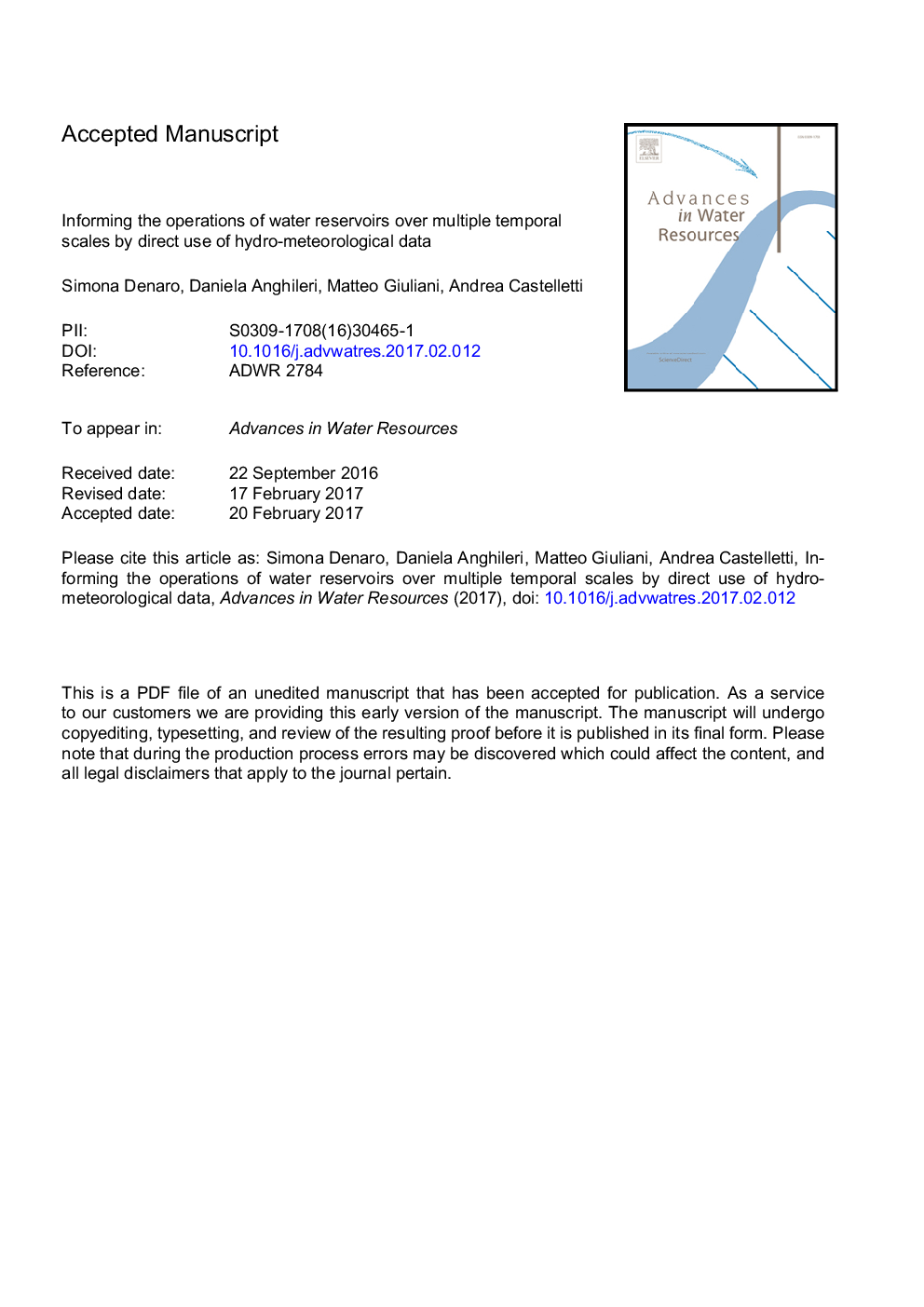| کد مقاله | کد نشریه | سال انتشار | مقاله انگلیسی | نسخه تمام متن |
|---|---|---|---|---|
| 5763796 | 1625608 | 2017 | 39 صفحه PDF | دانلود رایگان |
عنوان انگلیسی مقاله ISI
Informing the operations of water reservoirs over multiple temporal scales by direct use of hydro-meteorological data
ترجمه فارسی عنوان
اطلاع از عملیات مخازن آب در مقیاس های زمانی مختلف با استفاده مستقیم از داده های هیدرو هواشناسی
دانلود مقاله + سفارش ترجمه
دانلود مقاله ISI انگلیسی
رایگان برای ایرانیان
کلمات کلیدی
مخازن آب پیش بینی هیدرولوژیکی، عملیات بهینه، انتخاب ورودی، برف،
موضوعات مرتبط
مهندسی و علوم پایه
علوم زمین و سیارات
فرآیندهای سطح زمین
چکیده انگلیسی
Water reservoir systems may become more adaptive and reliable to external changes by enlarging the information sets used in their operations. Models and forecasts of future hydro-climatic and socio-economic conditions are traditionally used for this purpose. Nevertheless, the identification of skillful forecasts and models might be highly critical when the system comprises several processes with inconsistent dynamics (fast and slow) and disparate levels of predictability. In these contexts, the direct use of observational data, describing the current conditions of the water system, may represent a practicable and zero-cost alternative. This paper contrasts the relative contribution of state observations and perfect forecasts of future water availability in improving multipurpose water reservoirs operation over short- and long-term temporal scales. The approach is demonstrated on the snow-dominated Lake Como system, operated for flood control and water supply. The Information Selection Assessment (ISA) framework is adopted to retrieve the most relevant information to be used for conditioning the operations. By explicitly distinguishing between observational dataset and future forecasts, we quantify the relative contribution of current water system state estimates and perfect streamflow forecasts in improving the lake regulation with respect to both flood control and water supply. Results show that using the available observational data capturing slow dynamic processes, particularly the snow melting process, produces a 10% improvement in the system performance. This latter represents the lower bound of the potential improvement, which may increase to the upper limit of 40% in case skillful (perfect) long-term streamflow forecasts are used.
ناشر
Database: Elsevier - ScienceDirect (ساینس دایرکت)
Journal: Advances in Water Resources - Volume 103, May 2017, Pages 51-63
Journal: Advances in Water Resources - Volume 103, May 2017, Pages 51-63
نویسندگان
Simona Denaro, Daniela Anghileri, Matteo Giuliani, Andrea Castelletti,
